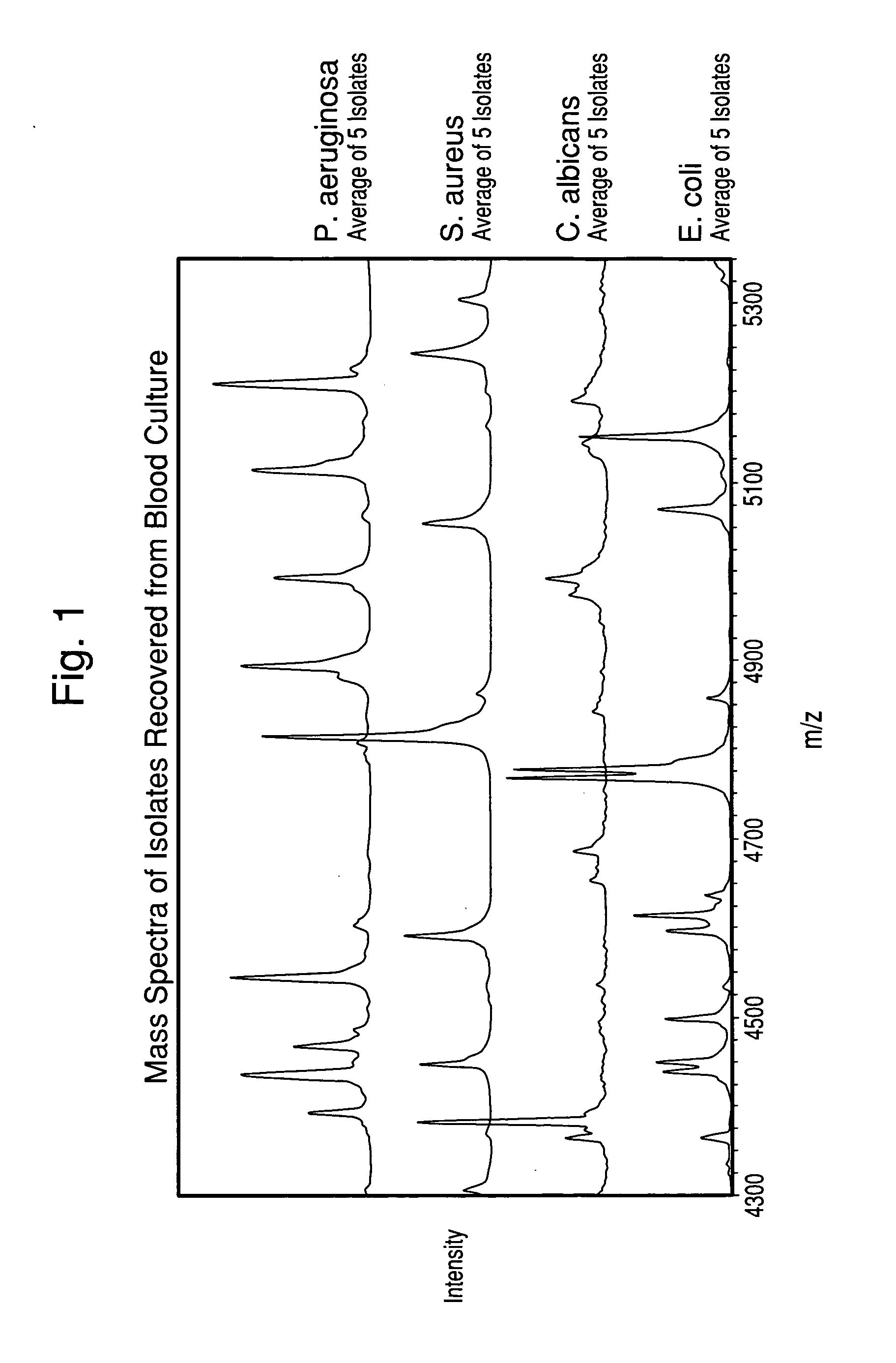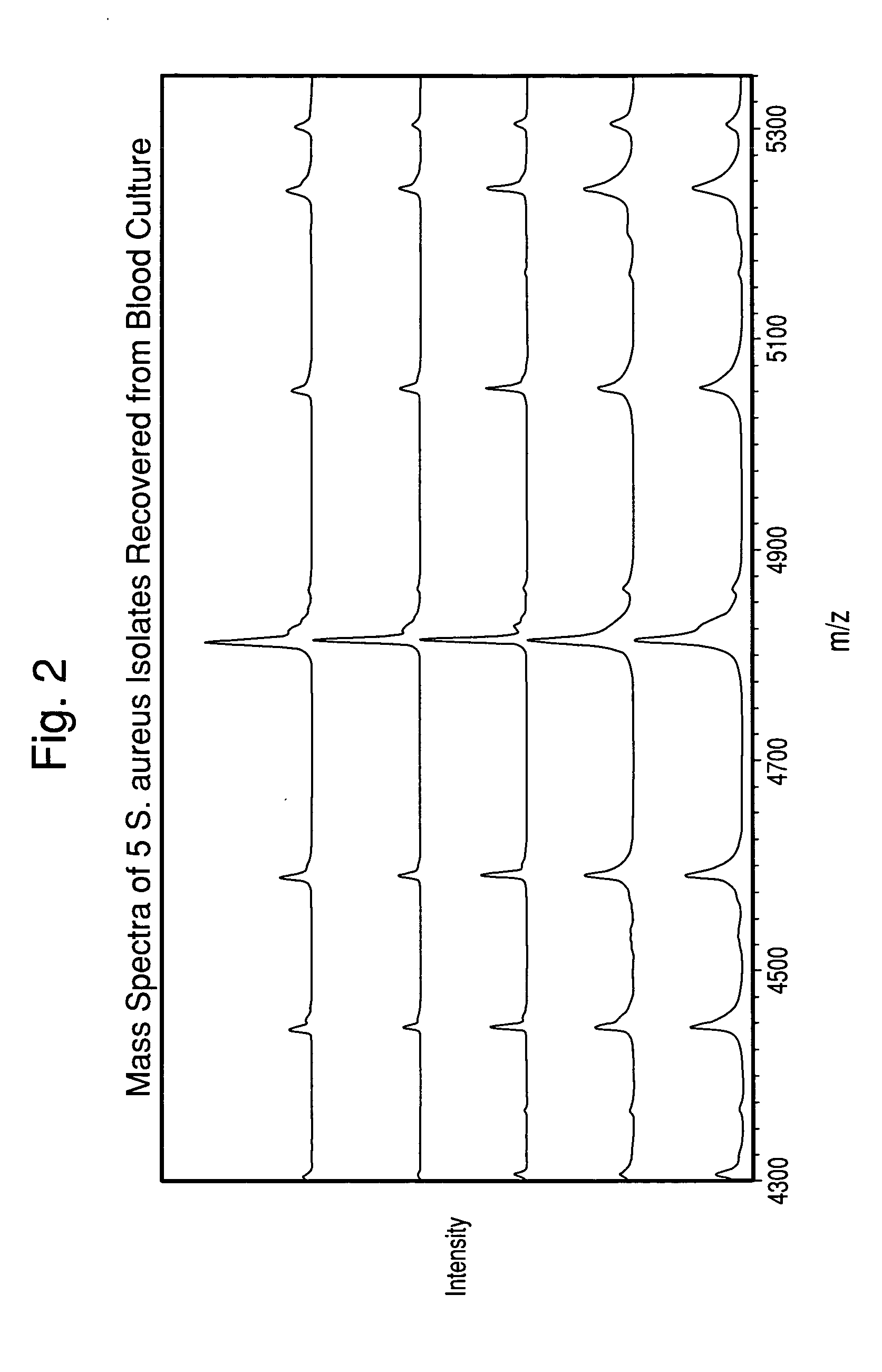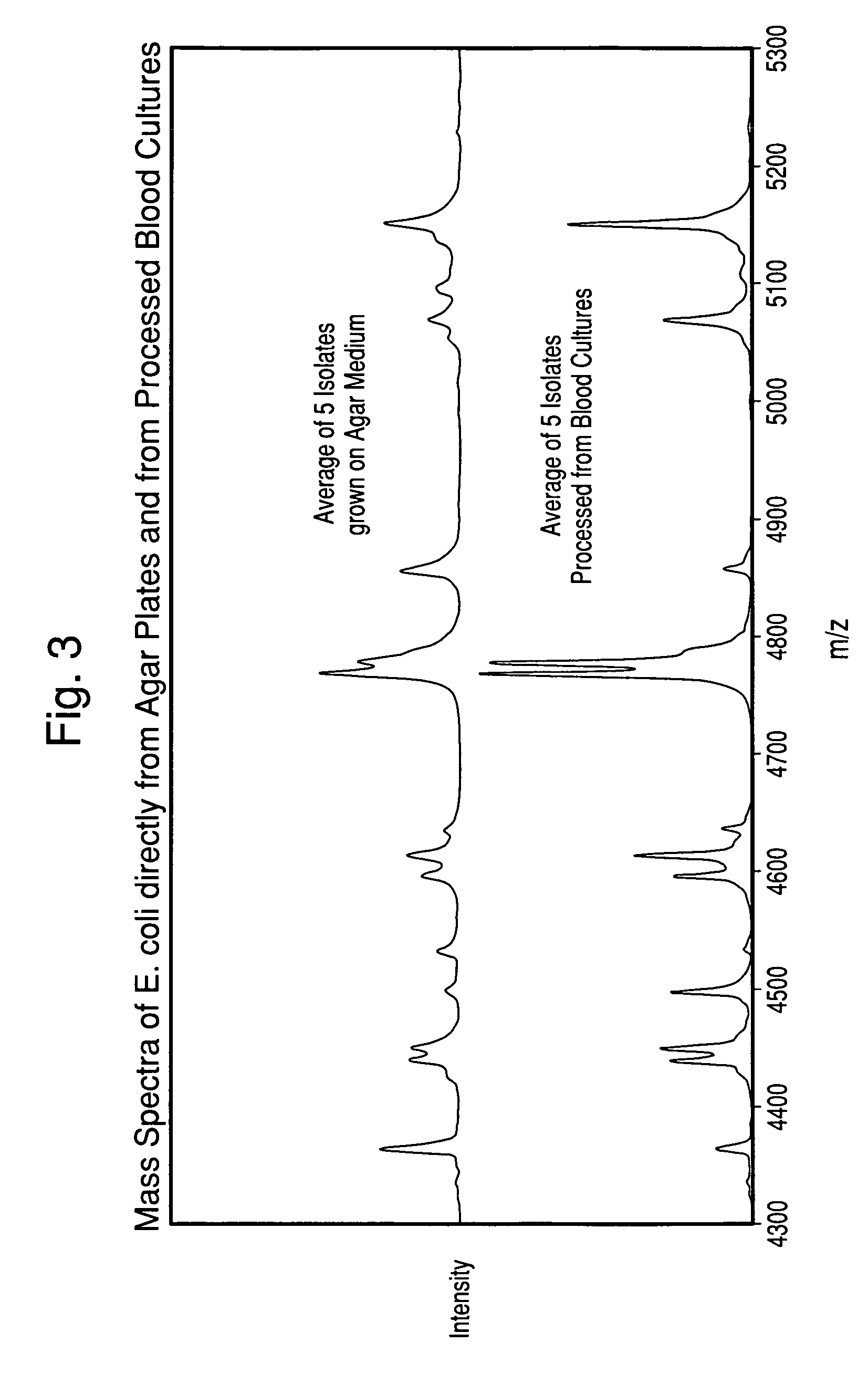Method for separation, characterization and/or identification of microorganisms using mass spectrometry
a mass spectrometry and microorganism technology, applied in the field of methods and systems for detecting, isolating and/or identifying microorganisms in samples, can solve the problems of bloodstream infection, high morbidity and mortality, and take several days to perform, and achieve the effect of characterization and/or identification of microorganisms more quickly and faster diagnosis
- Summary
- Abstract
- Description
- Claims
- Application Information
AI Technical Summary
Benefits of technology
Problems solved by technology
Method used
Image
Examples
example 1
Lysis-Centrifugation Method for Identification of Microorganisms from Blood Cultures by MALDI-TOF Mass Spectrometry
[0075]Microorganisms were “seeded” at a low inoculum into BacT / ALERT® SA bottles containing 10 mLs of human blood. Blood culture broth samples were removed from bottles within a few minutes of being flagged positive by the BacT / ALERT® 3D Microbial Detection System. Broth samples were processed to separate microorganisms from blood and media components that could interfere with subsequent analysis as follows:
[0076]4.0 mL of broth from freshly positive blood cultures was combined with 2.0 mL Lysis Buffer (0.45% Brij® 97 in 0.3M CAPS, pH 11.7), vortex mixed for 5 seconds and then incubated in a 37° C. waterbath for 90 seconds. After incubation, 0.95 mL of lysate was layered on top of 0.5 mL of density cushion (14% w / v Iohexyl, 0.005% Pluronic F-108 in 10 mM Hepes, pH 7.4) in each of four 1.5 mL conical centrifuge tubes. All four tubes were then centrifuged for 2 minutes at...
example 2
Analysis of Microorganism Specimens Processed from Positive Blood Cultures with Lysis-Centrifugation by MALDI-TOF MS
[0078]Specimens processed according to the procedure in Example 1 were rapidly thawed at 37° C. (if previously frozen), mixed gently, and then diluted to use-strength (1:4, 1:8, and 1:16) in purified water. 1.0 μL of each diluted specimen was applied in duplicate to a MALDI-TOF target plate. To one of each of the duplicates, 1.0 μL of 50% Formic Acid was added. All applied specimens were allowed to dry at ambient temperature, and then 1.0 μL of matrix solution was applied. The Matrix consisted of a 50:50 mix of Alpha-Cyano (alpha-cyano-4-hydroxycinnamic acid solution, AnagnosTec GmbH, Germany) and DHB (2,5-dihydroxybenzoic acid, AnagnosTec GmbH, Germany).
[0079]For comparison, the corresponding microbial isolates were grown on agar media that was appropriate for the species, and smeared directly on the MALDI-TOF target plate in duplicate. The microorganisms on one of th...
example 3
Identification of Microorganism Specimens Processed from Positive Blood Cultures with Lysis-Centrifugation by MALDI-TOF MS and a Commercially Available Microorganism Identification Database
[0085]One hundred twenty-three microorganism isolates were grown, processed, and mass-analyzed as described in Examples 1 & 2. The microorganisms comprised 14 species of bacteria and yeast commonly detected in clinical blood cultures.
[0086]After acquisition of each mass spectrum, a table of mass peaks was input into the “Saramis” microorganism identification software (AnagnosTec GmbH, Germany) for analysis. This software is built upon a database of MALDI-TOF Mass Spectra collected of agar-grown microorganisms.
[0087]Table 1 shows the results of all isolates grown both in blood culture and on agar media in parallel from the same seed cultures. The results in Table 1 are tabulated for all cultures, although the cell concentration in the final suspension for some isolates was below the target concentr...
PUM
 Login to View More
Login to View More Abstract
Description
Claims
Application Information
 Login to View More
Login to View More - R&D
- Intellectual Property
- Life Sciences
- Materials
- Tech Scout
- Unparalleled Data Quality
- Higher Quality Content
- 60% Fewer Hallucinations
Browse by: Latest US Patents, China's latest patents, Technical Efficacy Thesaurus, Application Domain, Technology Topic, Popular Technical Reports.
© 2025 PatSnap. All rights reserved.Legal|Privacy policy|Modern Slavery Act Transparency Statement|Sitemap|About US| Contact US: help@patsnap.com



